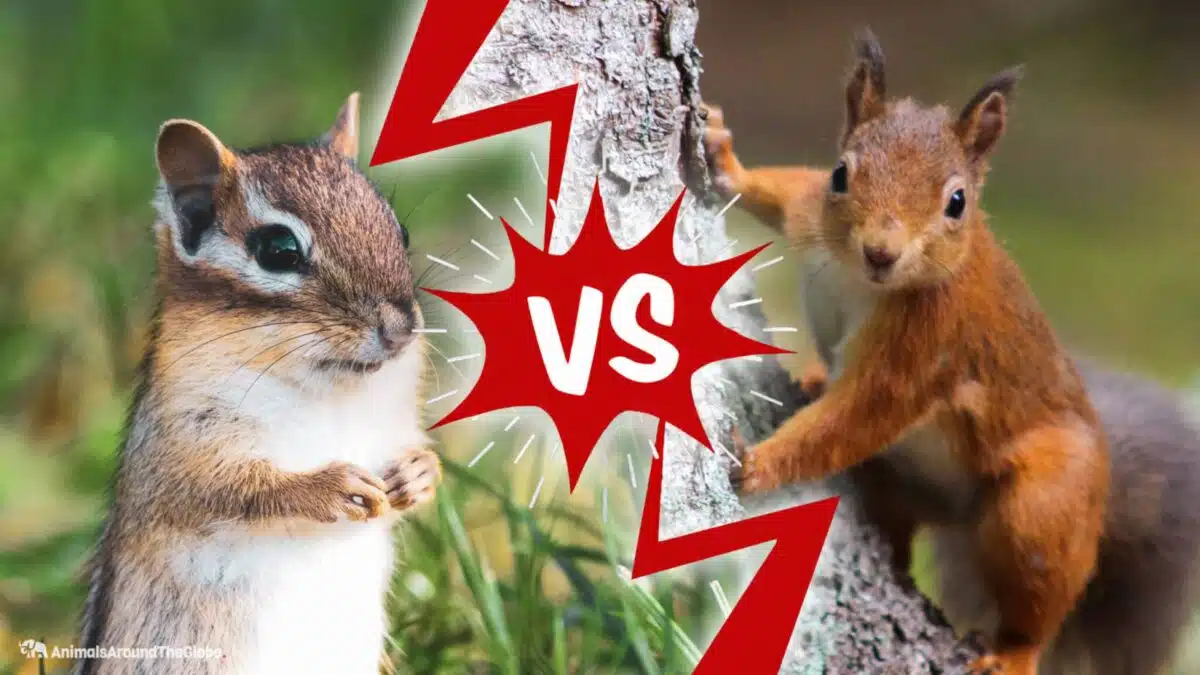It is hard to tell these nut-loving creatures apart when they are equally adorable and share so many characteristics. Today we will dissect all of their differences for you, chipmunk vs. squirrel!

If you’re an animal enthusiast, then no doubt you’ve wondered: is a chipmunk better than a squirrel? It’s a difficult question to answer with so many considerations. Weighing up the pros and cons can be tricky, but fear not!
Here we will break down all the characteristics that make chipmunks and squirrels unique and why they might be cooler than their tree-dwelling rival.
Continue reading to learn more details about this battle between small mammals, Chipmunk vs. Squirrel – trivia included!
History of the Chipmunk
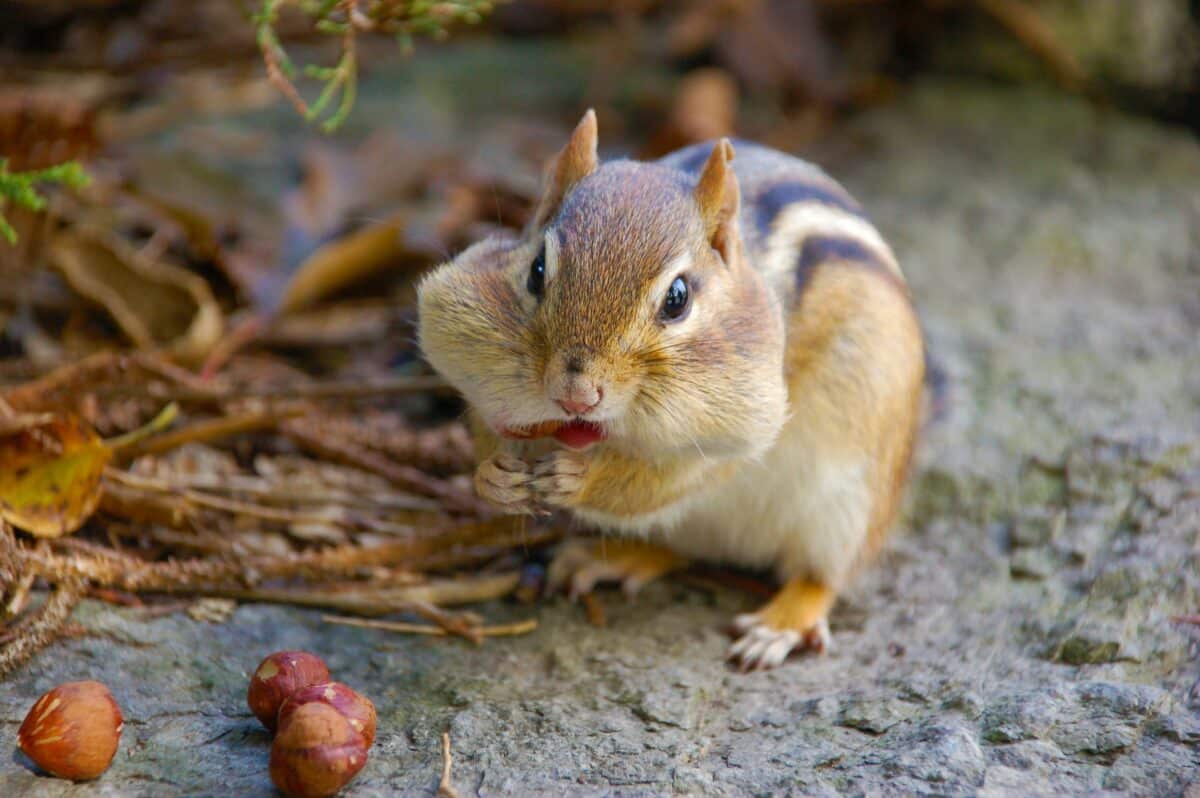
Chipmunks are small woodland rodents from North America and have been documented as far back as the early 1900s.
Joseph Grinnell, who was a Californian biologist and zoologist, described the “Chipmunk” as having reddish-brown fur, dark stripes on its body, and a long slender nose – perfect identifiers for this commonly seen furry critter!
Over 25 species of chipmunks can be found worldwide in various habitats, ranging from woodlands, tundras and even urban areas. Their popularity has grown amongst wildlife enthusiasts, and they never fail to bring joy to those lucky enough to witness them in their natural environment!
History of the Squirrel
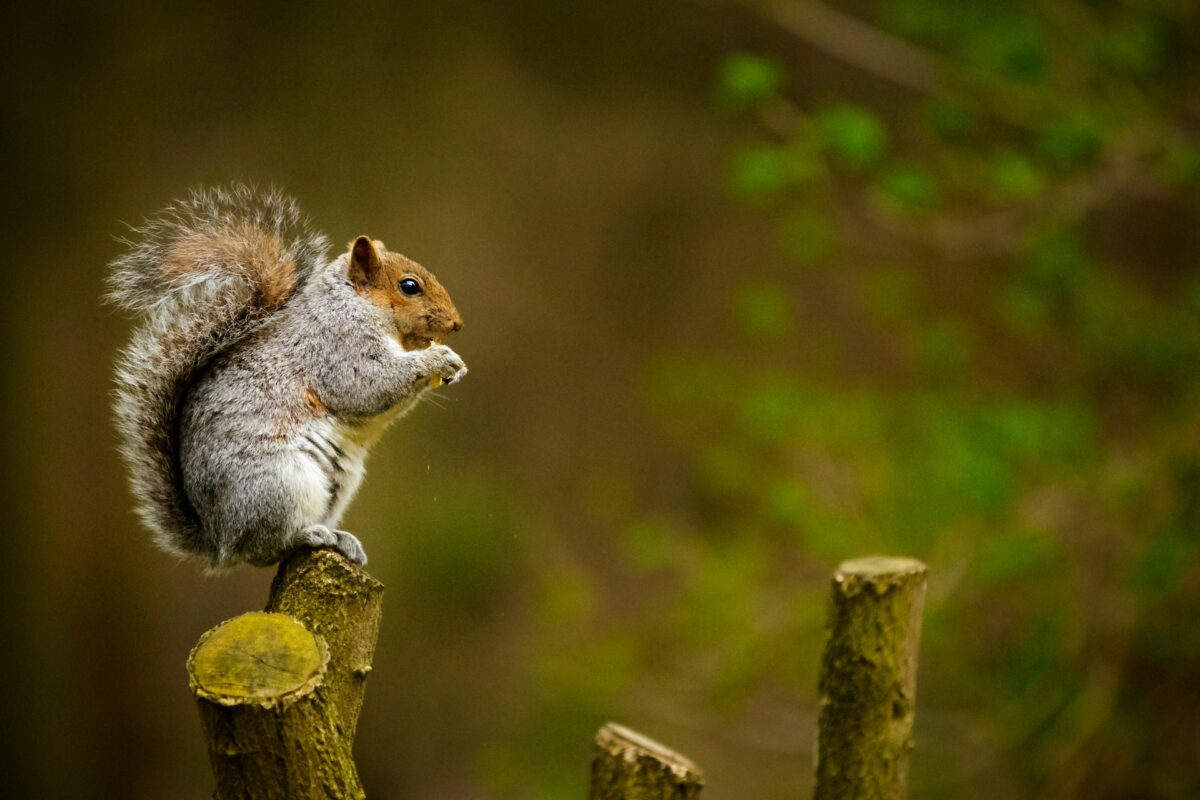
Squirrels have been around for millions of years. At this time, squirrel species were found in many environments across Europe, North America, and Asia.
The earliest squirrels were much larger than their modern-day peers but evolved to become what we witness today. One of the most interesting things about squirrels is how they adapted their behaviors to changing climate events, surviving from icy cold to warmer periods.
In agriculture and human population growth, domestication and appreciation for various squirrel species go way back. Squirrels’ ability to adapt has allowed them to learn behaviors, such as gathering food from humans or storing nuts for later use — traits that made them an integral part of our daily lives.
Types Of Chipmunk Species
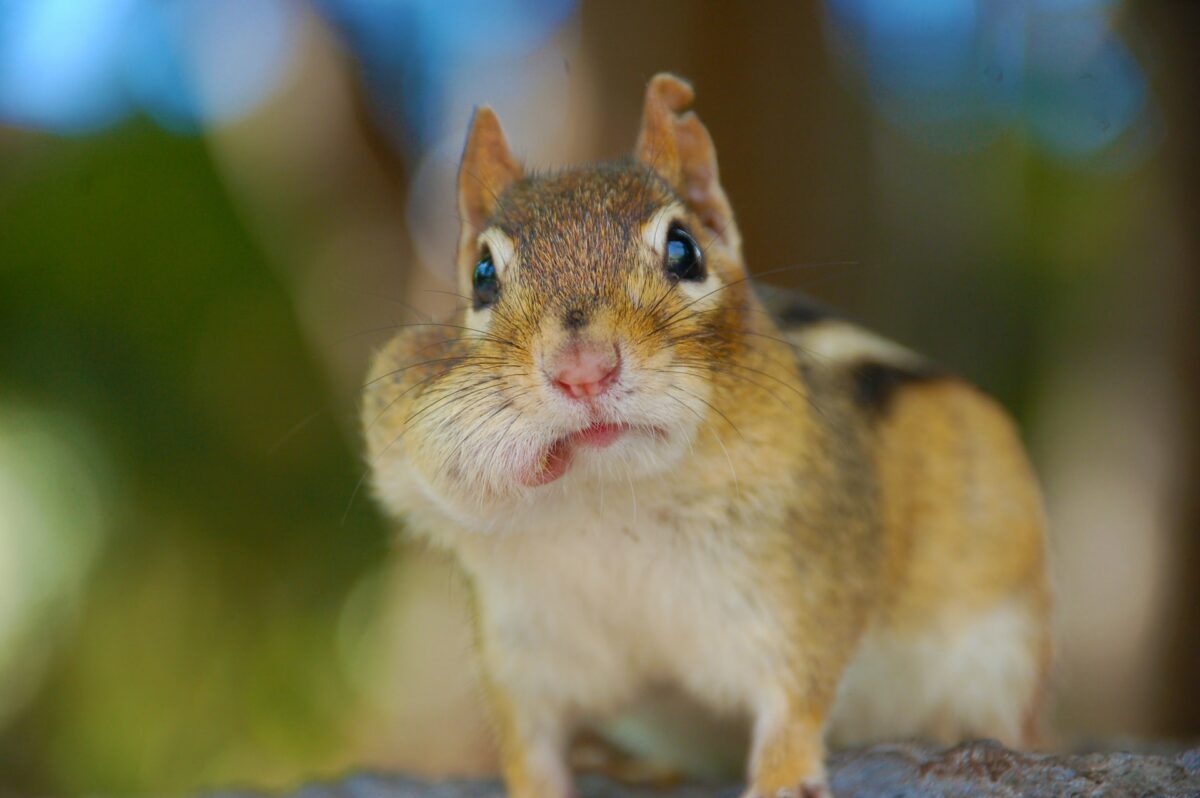
Chipmunks are native to North America and come in a variety of species. There are distinct types ranging from the Eastern Chipmunk and Least Chipmunk to the Long-tailed chipmunk and bushy-tailed woodchip.
These animals feature cute stripes that often run down their backs and come in various colors, including brown, gray, red, and white. While typically not larger than 5 inches in length, these small mammals can easily be recognized by their short tails, which are just one-third of the size of their bodies.
Though small, they play an essential role in keeping ecosystems healthy by dispersing seeds on their daily journeys searching for food!
Types Of Squirrel Species
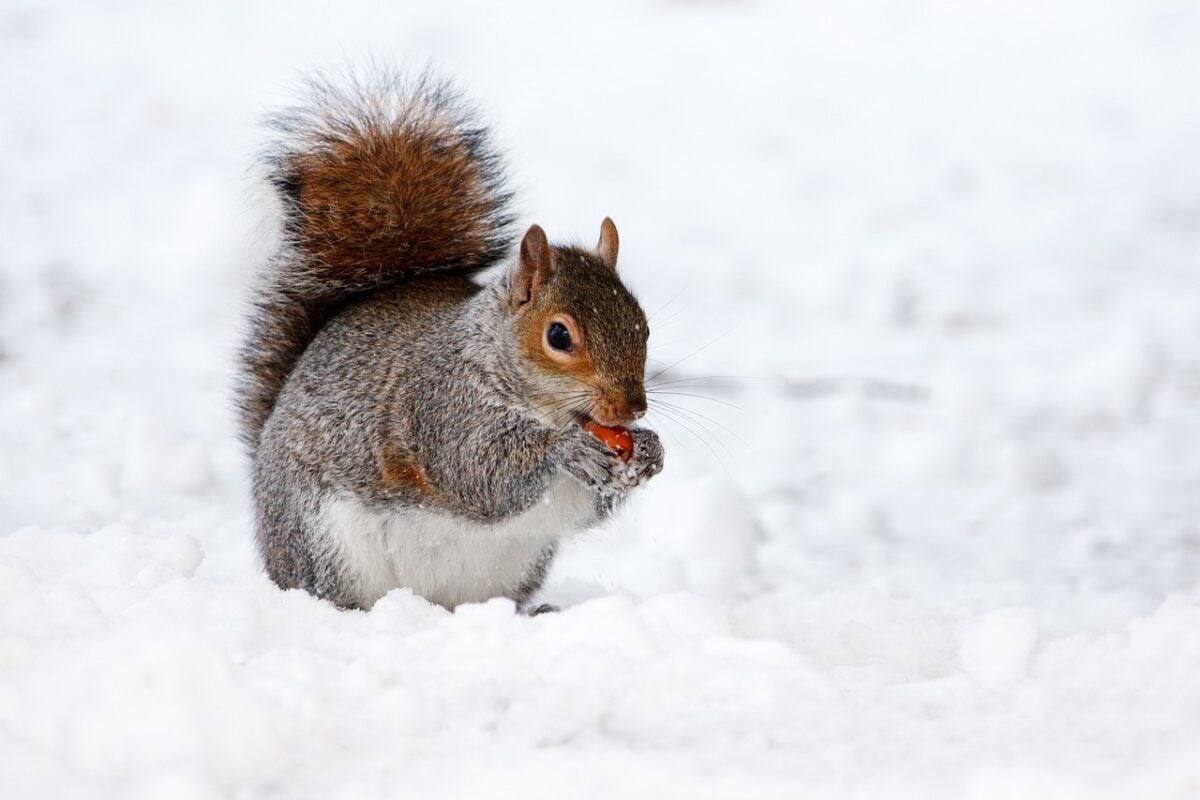
Although they share many of the same physical characteristics, there are many different species of squirrels. Grey squirrels are one of the most commonly seen members of the family Sciuridae; with their gray fur and white bellies, these creatures can be spotted romping in yards across all of North America.
The flying squirrel is also prevalent in certain areas. It has adaptations like a parachute-like membrane that allows them to glide from tree to tree quite effectively.
Red squirrels boast red fur with a white belly and are mostly located in Eurasia. In contrast, ground squirrels have wide-spreading populations across the globe and live their lives deep within their den holes.
Further variants include marmots, tree squirrels, and even more exotic species like those living in tropical forests – all of which have unique abilities in adapting and living life on earth as one of nature’s furry residents!
Comparison Chart
| Features | Chipmunk | Squirrel |
| Size | Chipmunks are smaller than squirrels, measuring 8 to 10 inches long | Squirrels measure 16 to 21 inches in length. |
| Weight | They weigh around 2 to 5 ounces. | They weigh as much as 1 – 1.5 pounds. |
| Color | Reddish brown with a white belly and distinct stripes on their backs. | Gray in color with a darker tail and a white chest. |
| Habitat | Chipmunks live in woodlands and forests. | Squirrels inhabit live in deserts, grasslands, tundra regions, and urban areas. |
| Lifespan | They typically live for 2-5 years in the wild. | Squirrels live for 5-10 years in captivity. |
Difference Between Chipmunk Vs. Squirrel
The chipmunk and the squirrel are two very different animals, though they may look similar at first glance. While both creatures are small, you can still tell these animals apart by their abilities – let’s compare the chipmunk vs. squirrel!
#1 Size
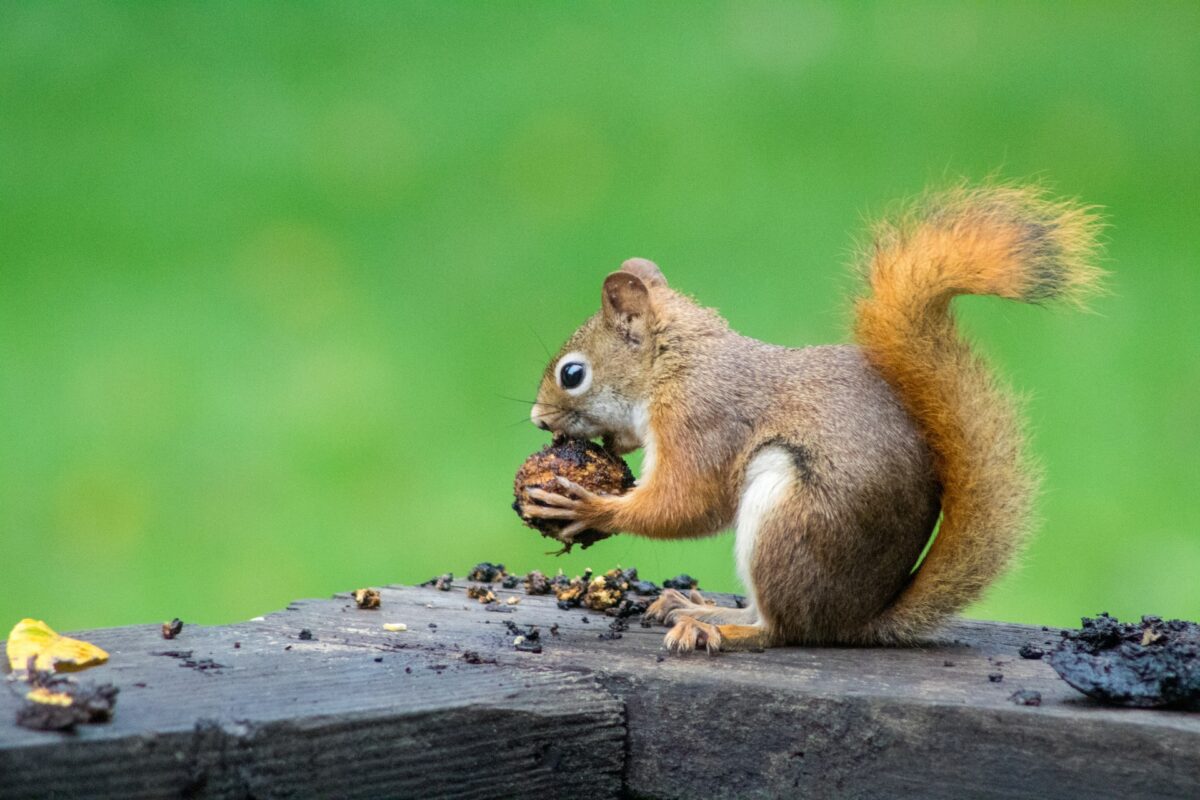
Chipmunks and squirrels are both small rodents, but there are some differences in their size. Chipmunks tend to be much smaller than squirrels. They measure 8 to 10 inches long and weighing around 2 to 5 ounces.
On the other hand, squirrels can range from 16 to 21 inches in length and weigh as much as 1 – 1.5 pounds. It means that chipmunks are roughly one-third to one-sixth the size of an average squirrel.
In addition, chipmunks have shorter tails than their larger counterparts. A typical adult squirrel has a tail of anywhere from 6 to 8 inches long. Meanwhile, a chipmunk’s tail is usually less than half that size – only 3 to 4 inches long on average.
The difference in tail lengths is likely due to lumbering movement patterns which require more balance and stability when maneuvering through trees or over difficult terrain; chipmunks move quickly along the ground, so they don’t need such adaptations for balance and stability.
Furthermore, their smaller size allows chipmunks to fit into more secluded areas for shelter or nesting purposes. In contrast, squirrels must rely on larger cavities like tree hollows or dens made from branches and twigs.
Additionally, the small size of chipmunks makes them better suited for squeezing into tight spaces while searching for food sources buried underground or deep inside logs or crevices created by rocks and fallen trees.
While both species share many similarities related to size, there are clear distinctions that make chipmunks different from their larger cousins — namely, their much smaller bodies, shorter tails, and greater agility, which allow them access to certain unsuitable environments for squirrels.
#2 Fur coat
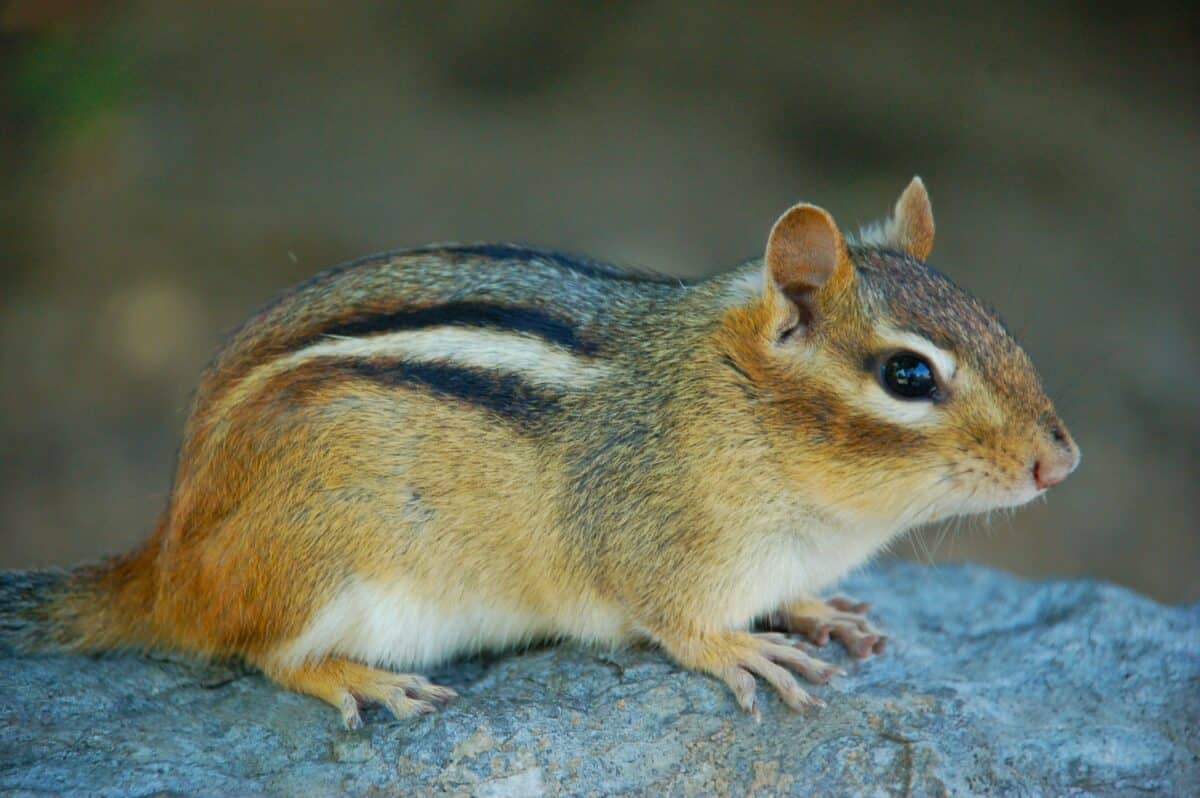
The most obvious difference between chipmunks and squirrels is their fur. Chipmunks have a thick and soft fur coat, usually light brown or grey, with darker stripes running along their back and sides.
This striped pattern is unique to chipmunks, making it easy to identify them among other woodland creatures.
In contrast, squirrels come in various colors and patterns depending on the species. The most common type of squirrel has reddish-brown fur with a white underside, while others may be black or grey.
Each individual has a unique pattern of lighter hair mixed within their coat, giving it extra depth and texture.
#3 Areas They Live
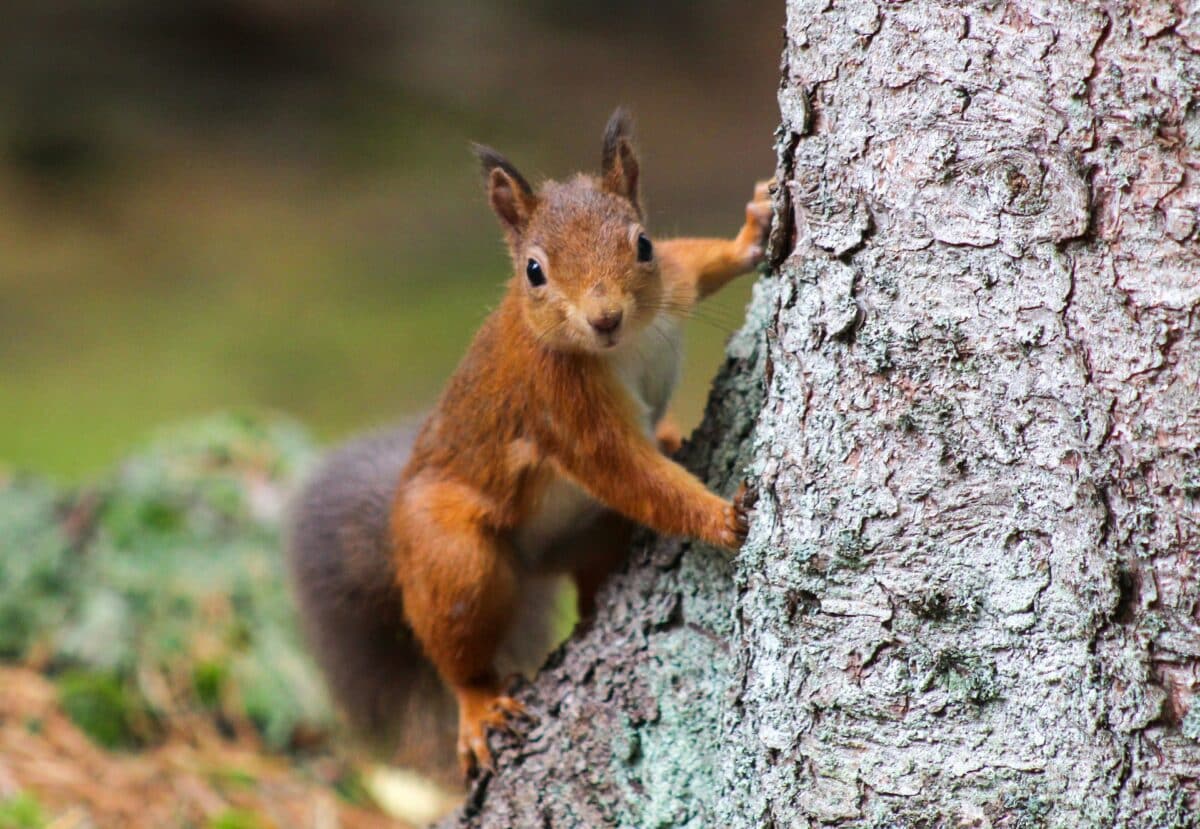
Chipmunks and squirrels often make their homes in various habitats. Both species primarily live in forested areas with plenty of food and shelter. Still, there are key differences in their habitat preferences.
Squirrels have a more diverse range regarding habitat selection. While most squirrels inhabit woodlands and forests like chipmunks do, they can also live in deserts, grasslands, tundra regions, and even urban areas. They are adept at adapting to different environments by changing their diets accordingly.
Additionally, squirrels are adapted to living in multiple levels of the environment, unlike chipmunks which remain on the floor level near trees for protection from predators. Squirrels can move freely between tree branches and through hollow cavities such as attics or walls inside buildings.
On the other hand, chipmunks are strongly associated with forests, as these animals typically prefer heavily wooded or coniferous environments with plenty of refuge and hiding places.
They prefer to construct nests under the ground or in hollow logs or trees, usually staying close to the base of trees to avoid predators. Chipmunks remain on the forest floor and dig burrows for refuge when danger arises.
#4 Diet
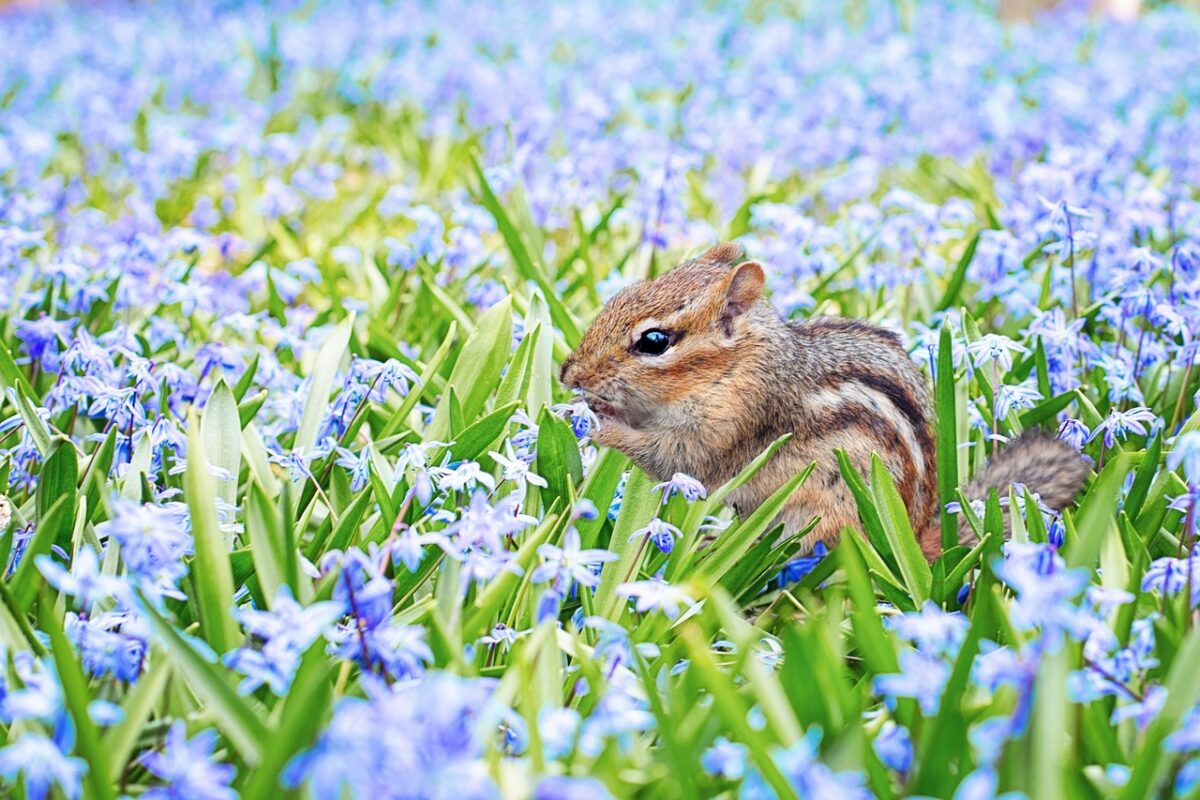
Chipmunks and squirrels both have quite different eating habits. Chipmunks can be observed foraging for nuts and seeds and eating insects, fungi, and other small animals. They are primarily diurnal feeders who often store their food in cheek pouches to consume later at a safe location.
In contrast, squirrels are omnivorous and can eat many plants and animals. They tend to feed on berries and nuts when they can find them in abundance but will also hunt eggs or lizards when available.
Learn more about which kinds of nuts squirrels eat.
While chipmunks flourish in forested regions where they can easily hide from predators while they snack on their favorite treats, squirrels have adapted to living in various habitats, including deserts, urban areas, and forests.
As a result, they may spend more time searching for food than the typical chipmunk since they have less access to their preferred sources of nutrition.
In general, chipmunks possess a more specialized diet than squirrels due to the type of environment each species is best suited to living in.
#5 Reproduction
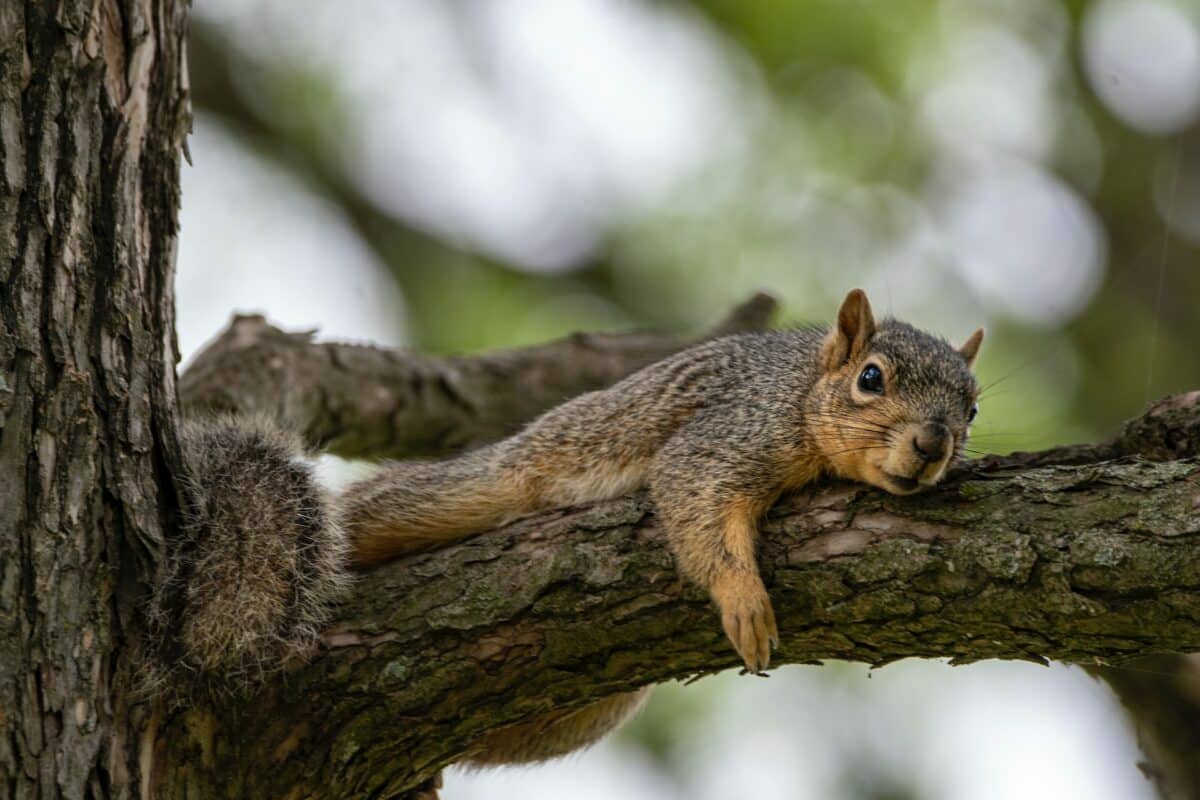
Reproduction is one area where the two species differ significantly, especially regarding the number of offspring they produce per litter and mating habits.
Chipmunks typically mate once a year, with females giving birth to an average of five pups each spring. It occurs after a courtship period that begins in late winter or early spring and lasts for several weeks.
Males engage in ritualized fights with one another during this time, which usually involves chasing, threatening vocalizations, and physical contact. Their reproductive cycle is largely dependent upon the climate they inhabit — in warmer climates, they may breed twice a year, while those living in colder regions may only breed once every two years.
In contrast to chipmunks, squirrels reproduce more frequently throughout the year—northern species like gray squirrels will usually mate twice annually, while southern species may do so three times per year.
Females usually give birth to around three offspring in each litter (though northern flying squirrels can sometimes give birth to up to six babies!). Squirrels typically court each other through chasing games and vocalizations such as barks and chirps rather than fighting or aggressive behaviors like chipmunks do.
To conclude, chipmunks and squirrels have different reproduction cycles. Many factors, such as food availability or environmental changes, affect these processes for both species.
As a result of human impact on their habitats, mainly deforestation or urbanization-based habitat destruction, both species are increasingly coming into close contact with one another, which can affect their mating strategies further.
Some researchers believe that hybridization has occurred between certain subspecies of a chipmunk and eastern grey squirrel due to recent habitat changes brought about by human activity!
#6 Behavior
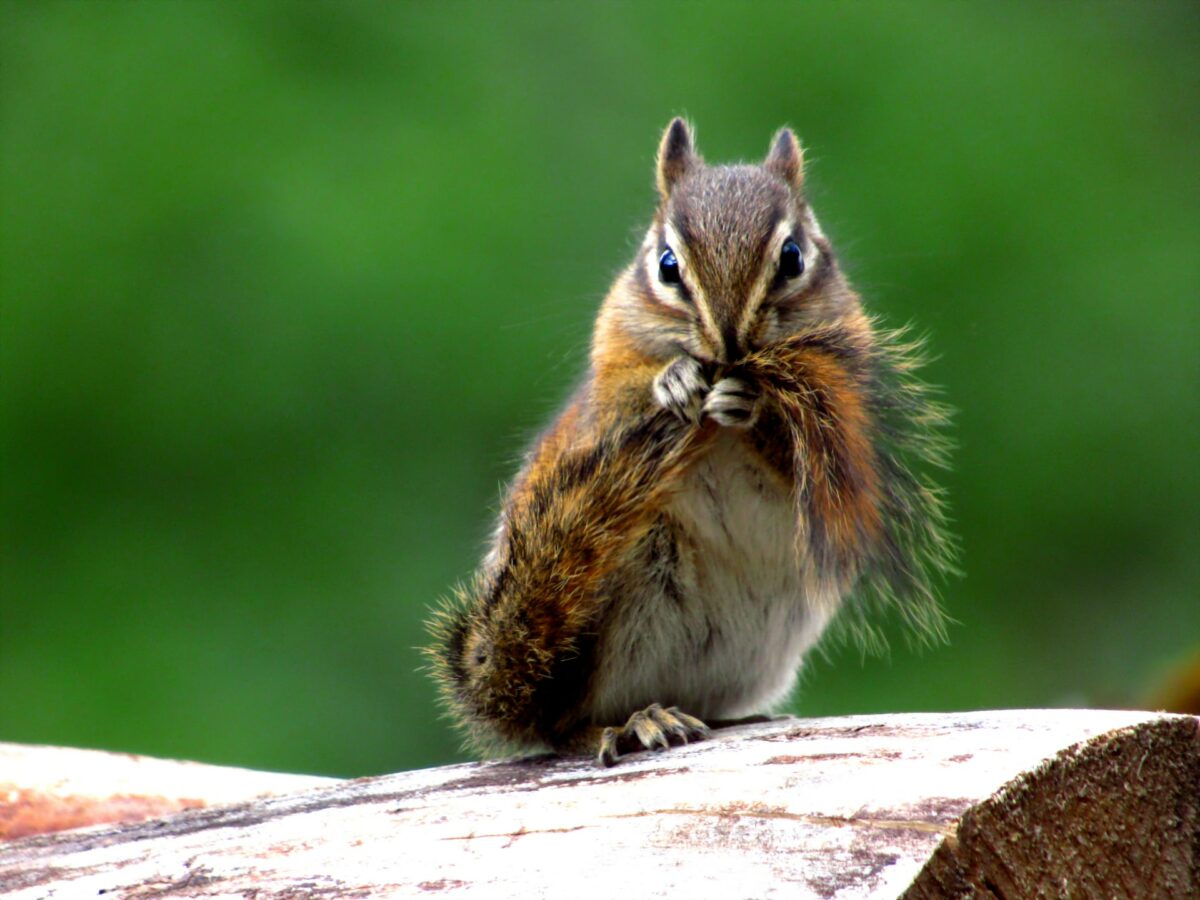
In terms of behavior towards humans, chipmunks tend to be more cautious than squirrels. They will usually run away from people if approached too closely. Squirrels, however, can become accustomed to humans if given food over time and may even come close enough to be petted or handled.
Another key difference between these two species is their communication style. Chipmunks make various vocalizations, including chirps, twitters, and squeaks, which warn others and attract mates during breeding seasons.
While both species share similarities in appearance, they have distinct behaviors that set them apart, making them unique creatures within the world of rodents.
#7 Lifespan
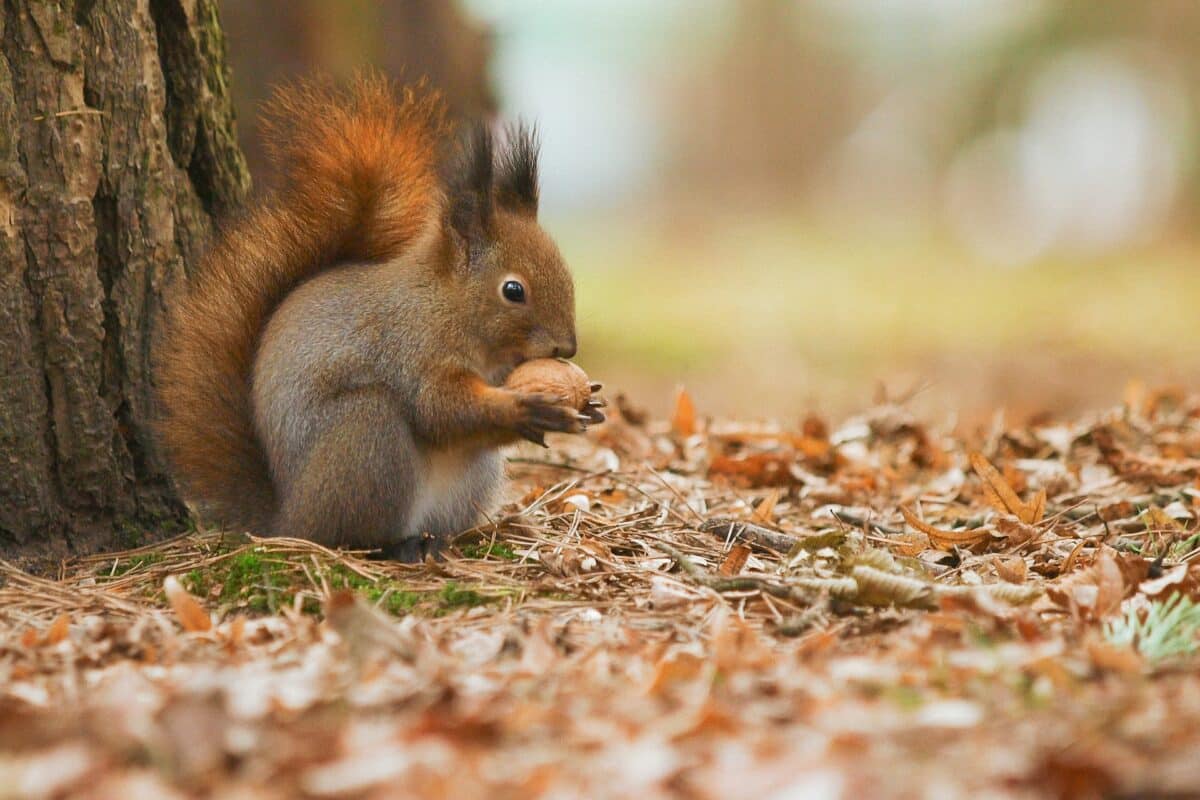
The lifespan of chipmunks and squirrels can vary drastically depending on the species and environment. On average, chipmunks typically live for 2-5 years in the wild, while some squirrels may live anywhere from 5-10 years in captivity.
This wide range is due to differences in habitat, diet, and other factors such as predation or disease that can reduce their lifespan.
Squirrels have a much longer lifespan than chipmunks due to several factors. Squirrels tend to inhabit forests rather than open grasslands, where they can find more safety among dense foliage.
Furthermore, some species, like ground squirrels, are known for hibernating during cold weather. It also helps extend their longevity by conserving the energy they would otherwise lose through physical activity.
Overall, chipmunk lifespans tend to be much shorter than squirrels regardless of whether they live in the wild or captivity, mainly due to different habits and diets and predation risk exposure.
Chipmunks prefer their habitats to be open terrain rather than densely foliated forests, which many species of squirrels have evolved to take advantage of to increase their chances of survival – leading them to have a greater lifespan than that of chipmunks.
Does Human Development threaten Chipmunks and Squirrels?
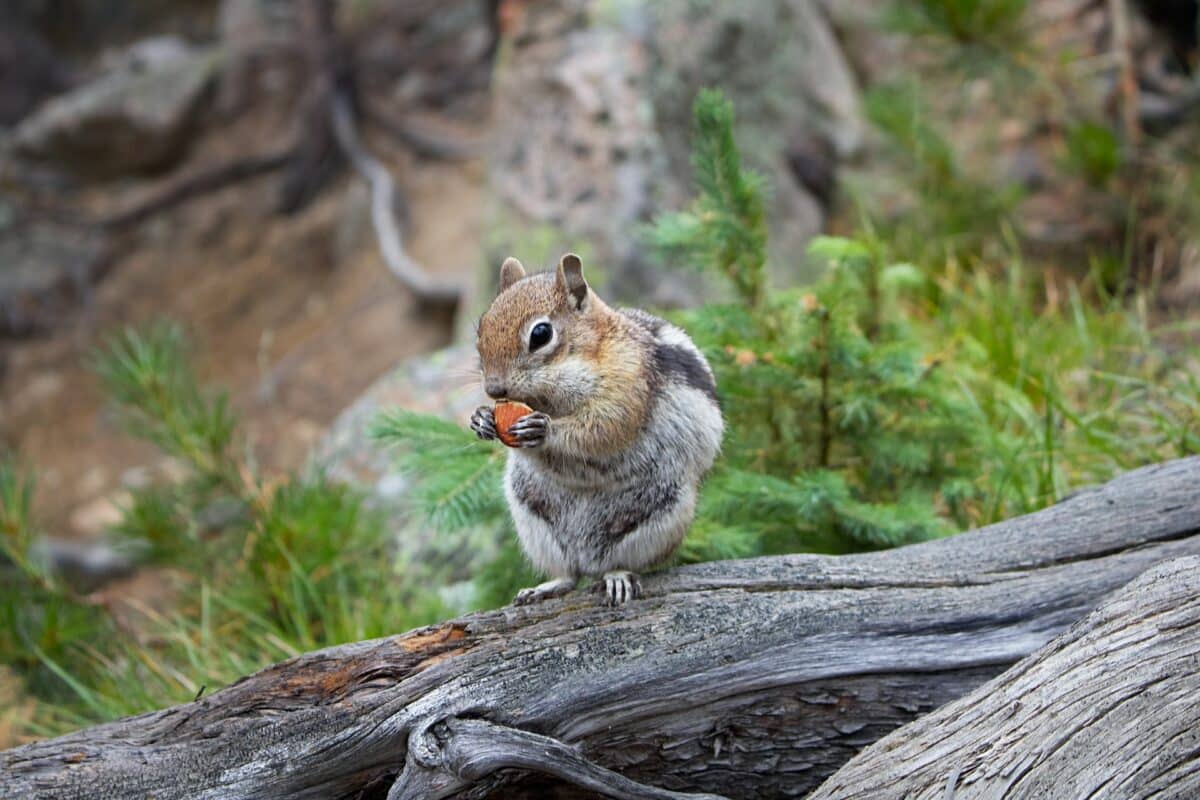
As cities sprawl and forests dwindle, the populations of chipmunks and squirrels around the globe are dwindling too. Human development has irrevocably threatened their habitats, placing many species in danger of extinction.
It has been linked to deforestation for urban construction and residential development. Due to environmental changes, many chipmunks and squirrels are now endangered or faced with population decline.
To ensure the thriving of our planet’s biodiversity, we must prioritize green spaces and be conscious of how our decisions affect these species. We can no longer sit idly by while countless creatures face threats to their lives – it is up to us as humans to take a stand for preservation.
How To Save These Species?
Taking steps to protect chipmunks and squirrels is an important responsibility everyone should be concerned with.
Friendly Environment
We can help chipmunks and squirrels to thrive in both rural and urban settings by building safe and hospitable environments for them to inhabit. By fostering an inviting atmosphere that meets their needs, we’ll be doing our part to ensure these creatures continue living in harmony with us!
Provide Food Sources
To ensure chipmunks and squirrels have a chance to thrive, fill your yard with bird feeders as an edible oasis. Protect their home by avoiding chemically harsh pesticides in the garden and be mindful when exploring nature – leave it better than you found it!
Limit Individual Interaction
By making small changes in our interaction with chipmunks and squirrels, we can help ensure their safety and welfare. Taking the necessary steps to limit contact with these wild animals is a great way of preserving nature’s precious wildlife.
Maintain Distance
Distance is key to appreciating chipmunks and squirrels in their natural habitat! Observe them at a safe range where they can remain comfortable without becoming unnecessarily stressed or exposed to possible illness. Enjoy watching these creatures carry out their routines undisturbed for an enriching experience.
Taking these small steps helps ensure that our incredible species of chipmunks and squirrels will be possible to admire for generations to come.
The Final Verdict
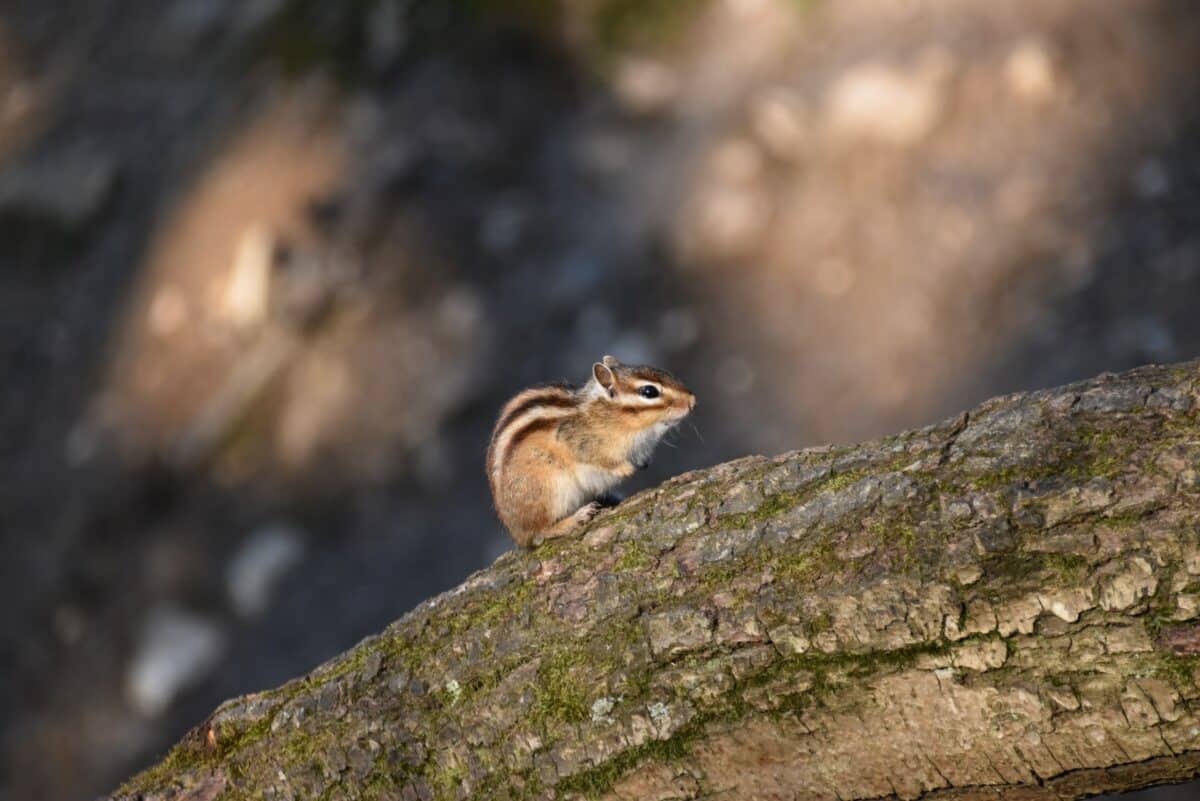
| Key Points |
| Chipmunks are native to North America and come in a variety of species. |
| Chipmunks tend to be much smaller than squirrels, measuring between 8 to 10 inches long and weighing around 2 to 5 ounces. On the other hand, squirrels can range from 16 to 21 inches in length and weigh as much as 1 – 1.5 pounds |
| The flying squirrel is also prevalent in certain areas and has adaptations like a parachute-like membrane that allows them to glide from tree to tree quite effectively. |
| Another key difference between these two species is their communication style. |
| On average, chipmunks typically live for 2-5 years in the wild, while some squirrels may live anywhere from 5-10 years in captivity. |
Chipmunk vs squirrel; though both animals are similar in many ways, there are also several key differences between chipmunks and squirrels. The most notable difference is their size, with squirrels being significantly larger than chipmunks.
Additionally, while both animals have furry tails, a squirrel’s tail is much longer and bushier than a chipmunk’s. Finally, another major difference is that chipmunks typically hibernate during winter, whereas squirrels do not.
Whether you’re trying to identify an animal in your backyard or want to learn more about these two creatures, keep these key characteristics in mind.
Thank you for reading this article on the chipmunk vs squirrel! At this point you should have no problem distinguishing them the next time you see a cute little rodent running up a tree. If you want to broaden your horizons regarding North America’s wildlife even further, take a look at the Most Endangered Animals in Minnesota.
Join our Forum for free today!


